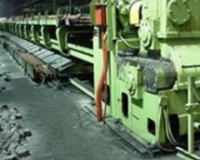SponsoredPost
True, it's not the star of the show, but if you lose your conveyor belt for any length of time, your productivity and profits will plummet.
It's fortunate, then, that the average conveyor belt doesn't need quite as much maintenance as other machines. However, you still need to formulate a plan to help you to minimise the dreaded downtime.
Get the right parts in
A lot of conveyor belt care is preventative. Regular maintenance is important to make sure your belt is in top condition; this also means that you can control downtime if you restrict maintenance tasks to weekends or evenings.
You also need pre-emptive care - if you have all the parts you need in the case of a sudden breakdown, you can be back up and running in a matter of hours. If you have to order parts in, you could be out of operation for two or three days; even longer if you need a more complex component.
You should make it a priority to have as many original parts in stock as possible. Never be tempted to buy cheaper third-party components just because they are cheaper - they won't be tooled to the same tolerances as the OEM parts and can cause damage or even void your warranty.
How to start your inventory
Most conveyer systems come with a list of the recommended spare parts that each model should have. Some are the more common parts that are often replaced, so having a few on hand makes a lot of sense - always have a batch of pulleys and so forth.
Have a look down your inventory and tick off each part that you have spare, then work on sourcing the less-common and the more complex - just in case.
Have a parts audit
This is one of the best things you can do to head off trouble at the pass! Most reputable conveyor manufacturer and suppliers, like Manchester's Renold, for example, will be happy to conduct a parts audit. This involves visiting your facility, looking at your system or systems, compiling your ideal parts list and also highlighting any upcoming maintenance or replacement issues.
Make your own inventory
Even if you don't have the parts audit, you should create your own database for your machines. You can make it as detailed or as simple as you want, but it should at least contain:
- the make and model of each conveyor;
- the length and the width of the belt;
- the type of motor;
- the belt type;
- any serial numbers;
- the date of the last maintenance check and what maintenance was performed, and
- the contact details of the manufacturer.
Get your staff on board
Make sure your employees all know when maintenance checks are performed. Usually the schedule depends upon production volume, so if teams know there's due to be downtime, or a part will soon need to be replaced, they can plan around this. If a particular part is nearing the end of its life, they can also keep an eye out for sudden deterioration and bring the overhaul forward. A failing part puts stress on its neighbours, so it needs to be swapped out sooner than usual.
Offer on-site trouble-shooting training
Teach staff how to spot signs of damage and wear - fraying, rattling, odd smells or sounds, excessive heat - and let them know that you'd prefer an hour of downtime to check a part than lose a day because of a sudden failure.





